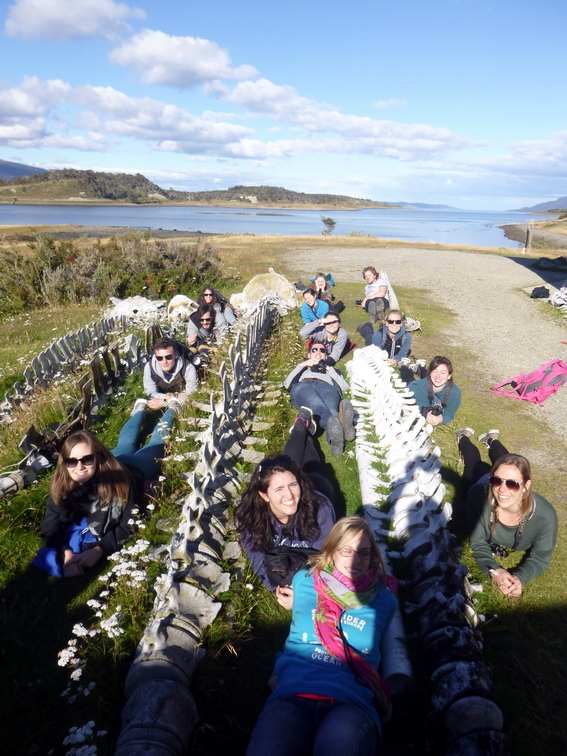Estancia Haberton – An encounter of Tierra del Fuego’s natural and human history
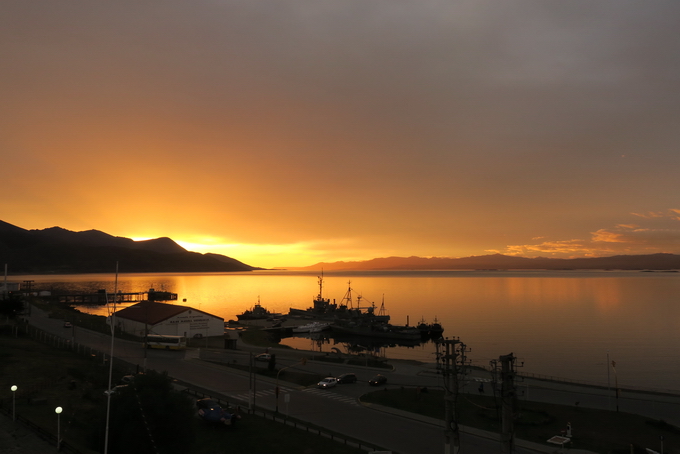
The day started out a blast. After the alarm rang and I opened my eyes the first thing that came out of my mouth was: “Dude Aran, look at that!” and in 5 second we were both setting up our tripods on the terrace getting a perfect shot of a sunrise over the Beagle channel. It was something else. After a half an hour long photo session we packed and got our first breakfast in our Ushuaian hotel. And then we were off to visit the historic place of Estanzia Haberton, where the history of European human settlement in this region starts. Quite soon our journey was blocked by the protesting citizens and workers of Ushuaia fighting against recent benefit cuts and extra social welfare taxes. The protests are generally peaceful, accompanied with singing, music and maté drinking, and the road blocked did not dampen our mood. After about half an hour we were let through and continued our journey past gorgeous views of the Andes with glaciers shining in the morning sun. There were some big caracaras, birds of prey, to be seen by the road. A pretty sight.

After about two hours we arrived at Estanzia Haberton. The farm has about 20.000 hectares of land, including islands (with penguins on them!), pastures and mountains but is considered a “small” for Argentinian standards. The Estancia was established in the late 19th century by missionary Thomas Bridges who had worked with the local Indian tribe the Yamana – of whom there is only one living representative today. Fortunately Thomas learned their language while and wrote an English-Yamana dictionary. This is a very cool book to have in hands as most languages of extinct tribes are forever lost with the last surviving members. The legacy of the Yamana will live on thanks to Thomas Bridges.
The Estancia gave up on sheep farming in the late 1990’s and is an important tourist site these days. It is also known as a jewel for biologists for its amazing museum Acatush, founded by. Natalie R. P. Goodall who married Thomas Bridges’ great-grandson Tommy Goodall. Natalie started some amazing collections of flora and fauna, particularly marine mammal and seabirds, and this that we have come to see today. Apart from setting up an amazing garden and marking all the trees that grow in area she started collecting bones of stranded marine mammals and birds on the beaches of Tierra del Fuego. This work is continued still today, even though Natalie very sadly passed away last year. This collection is now over 5.000 specimens strong! Wow! This is one of the biggest collections of cetacean skeletons in the world. The number of spectacled porpoise and Commerson’s dolphins is definitely the biggest in the world. And the amazing thing is that collection is in the middle of nowhere at the southern tip of South America. This place is a marine mammal anatomy heaven.
After a great historic and anthropololgical tour around the Estancia and an extremely yummy lunch at the little restaurant, we spent the whole afternoon in the museum. We learned about different whale and seal species that we may (or may not) encounter on our trip to the Antarctic with many different stories and easter eggs that both the guide Angie and Sonja provided to us.
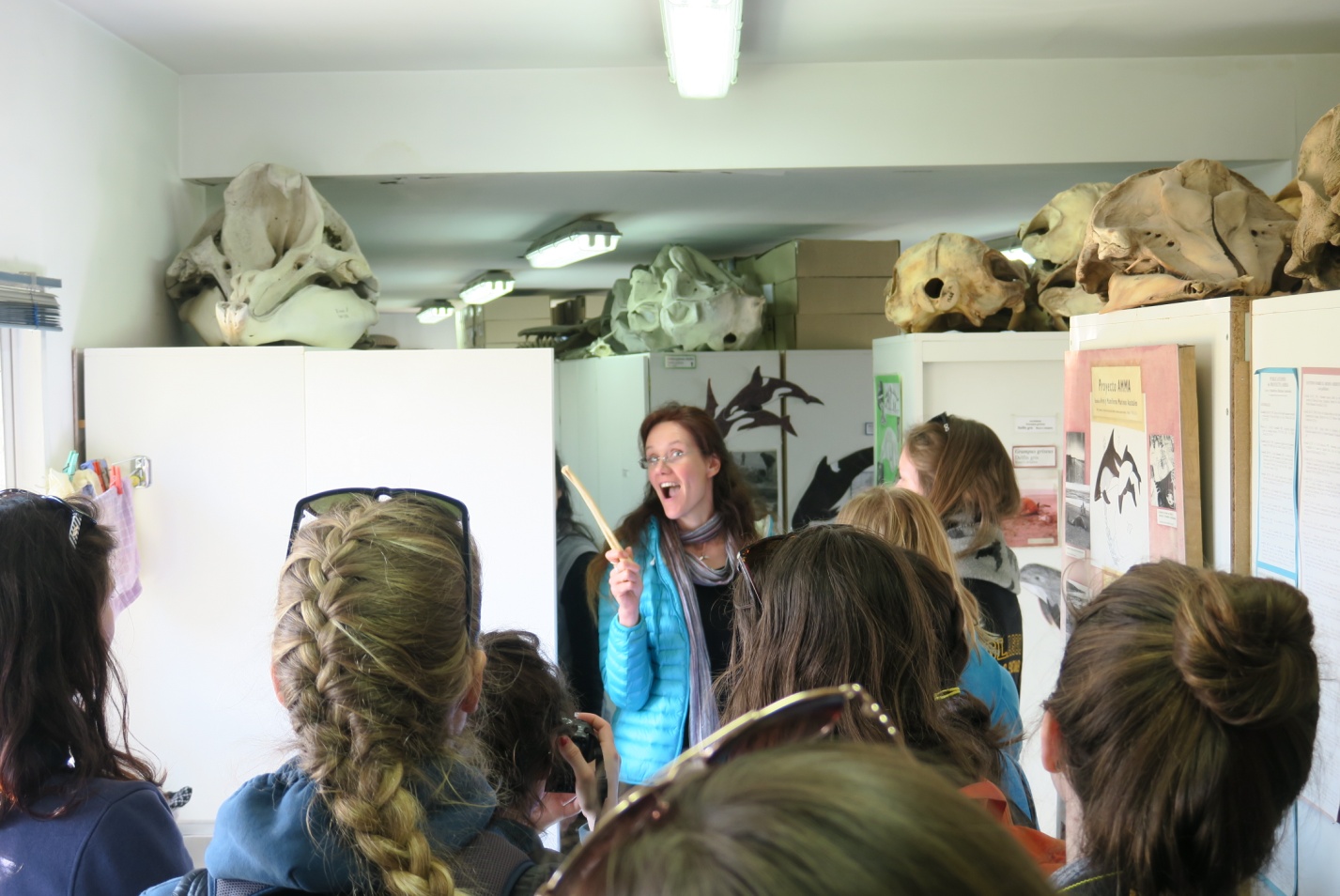
We got some very close encounters with big toothed leopard seals, crabeater seals with their filtering teeth, orcas, sperm whales and rare beaked whales – hardly known to science and rarely seen alive at sea!
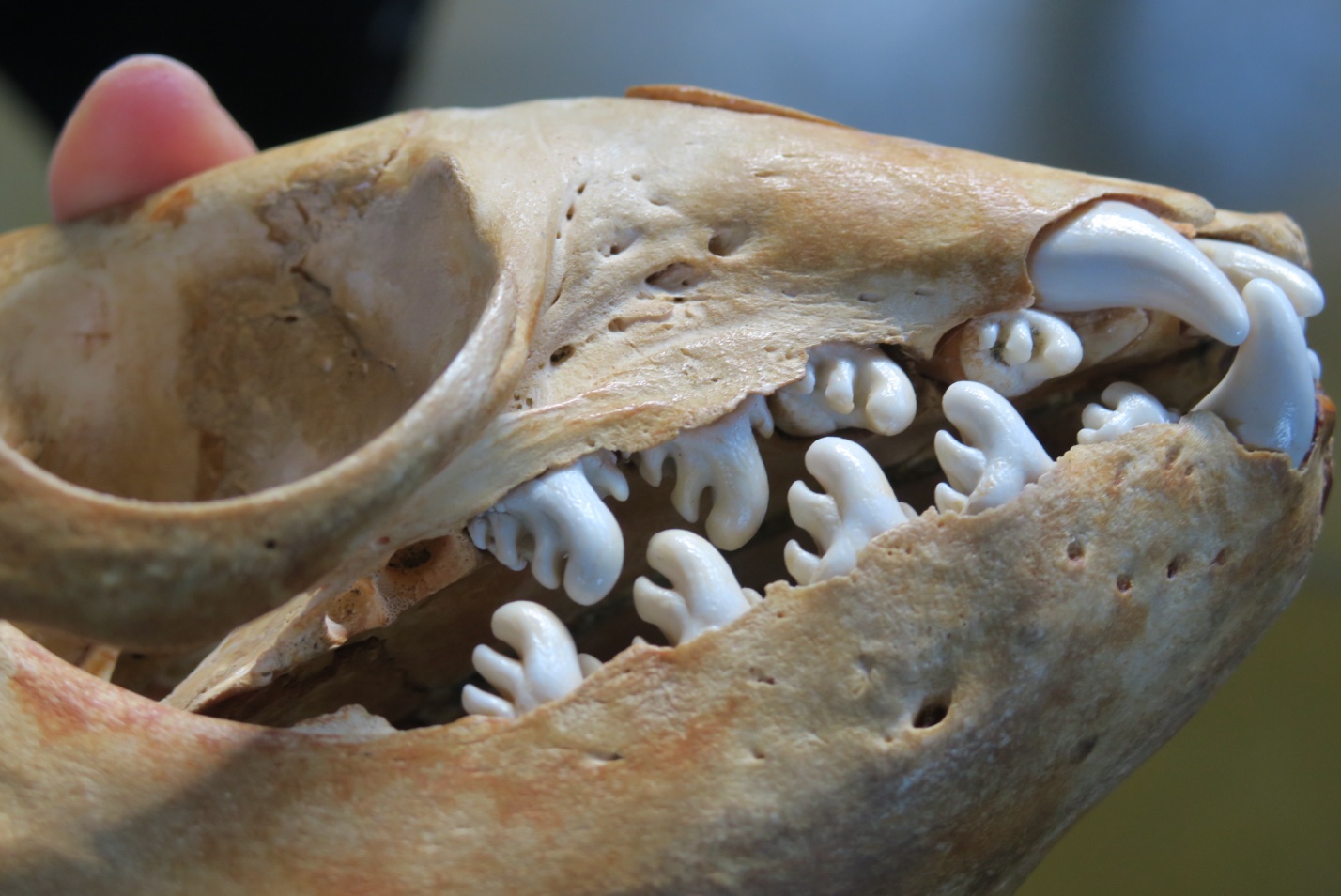
We were all quite stunned by this massive collection at the end of the world in a house that from the outside did not appear like much. I would have envisioned a museum with this kind of treasure trove and impact to have Doric pillars and massive wooden doors…..After the collection we also got to see how the bones are being prepared and how the tissue is removed in a quite smelly little shack. To be honest, I didn’t find the smell particularly bad, since it reminded me of the food I give to my turtle back home.
Just above the old house of Thomas Bridges is a small forest reserve in which a cemetery where workers and founders of the estanzia are buried including Thomas Bridges and Natalie Goodall. The forest is a great example of the Magellanic subpolar forest with the southern beech (Nothofagus) a key tree genus. The Nothofagus antarctica has an amazing sweet cinnamon smell about the leaves. What struck me is that the soil is only 20cm deep so the trees have really shallow root systems and are therefore very exposed to strong winds. A cool tree growing in the forest is the Winter’s bark or canelo (Drimys winteri) a relative of the magnolia, that has seeds with a very strong peppery taste. The compound is called polygodial and is sometimes used as a replacement for pepper in Chile and Argentina. There were also Austral parakeets in the canopy, but sadly I couldn’t get a photo of them.
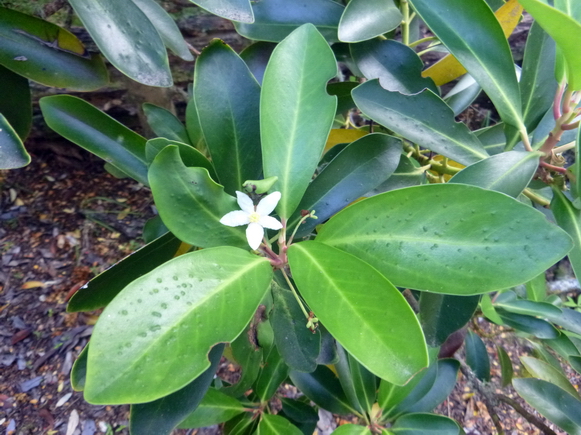
Today’s experience was truly amazing and also the weather provided with a full-on sunny day with no wind. Even though we are quite down south it felt kind of summerish. I was tempted to go for a swim in the have-felt-worse cold waters but I was not sure if my colleagues were prepared to see me naked. Tomorrow when we visit the National park of Tierra del Fuego, ‘ll be sure to take my swim gear. Hopefully the weather provides again. Till then. Hasta luego!
Tim



